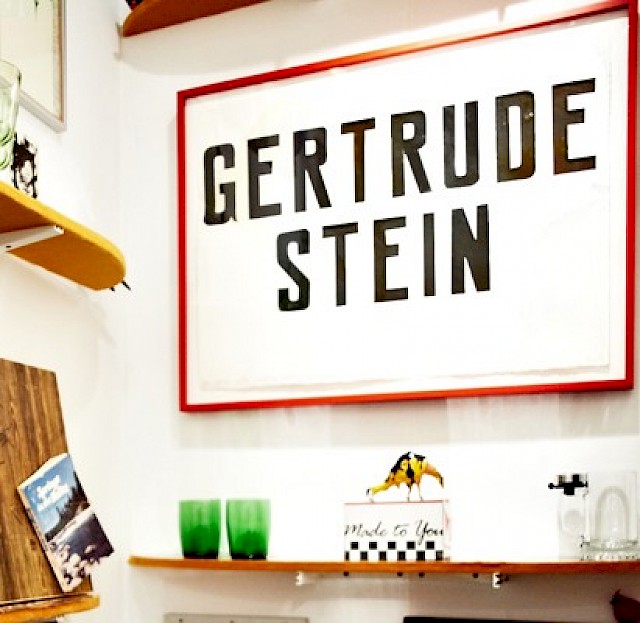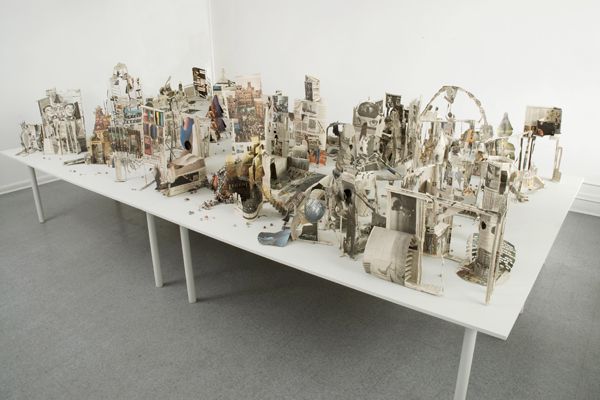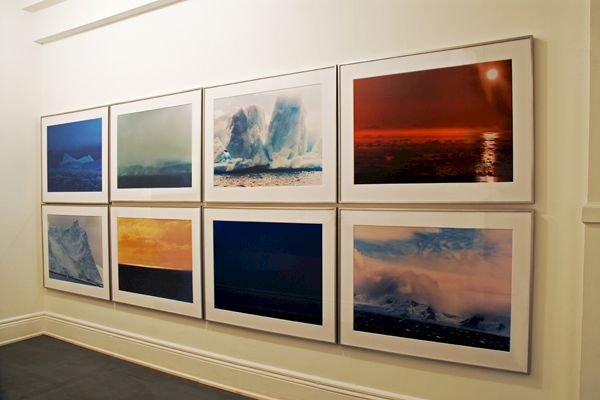BMW Art Guide by Independent Collectors
Devon Dikeou
The Dikeou Collection - Denver, USA

What was the first piece of artwork you purchased, and when was this?
Let me state that I am firstly an artist. However, the first piece of art I "collected", I "earned" as thank you/compensation for my work as an intern at the Tibor de Nagy Gallery in 1985.
That internship basically shaped my life as an artist/publisher/editor/viewer/collector. One of the jobs I was assigned to do was sort out old Artforums in the gallery basement—which was really a disused Ladies’ bathroom between the 7th and 8th floors, but that exercise was the best contemporary art education for any young artist, and I just couldn’t get enough. Then paging through an issue, I came across an amazing art project by Lucas Samaras. As I recall, it encompassed six double page spreads featuring a neo-abstract expressionist skeleton. The first image was a full view of the skeleton and underneath was printed the word, "Artist". The next dps was a close up of the skeleton head and underneath was the word, "Dealer", and the third spread zoomed into the mouth of the skull and bore the word "Collector" underneath. (As it turns out, I have had the chance to see the Samaras project again and instead of "Artist" the word below first skeleton was "Critic"—my "curatorial" mistake!).
Nonetheless, these positions, artist, dealer, collector, critic reflected to me the "who, what, why, where, and when" of the art world and became what my practice would encompass. It is because of my internship that the idea of these positions entered into my lexicon of art—viewing, making, publishing/editing, and collecting art related things and ideas.
The first art work the gallerist, Tibor de Nagy, and director, John Post Lee, gave me upon the completion of my summer internship was Robert Goodnough’s "One Two Three". It is a magical surreal red and red/pink silkscreen and is the first piece I acquired as an artist, a collector, and a critical eye.

Why do you collect?
As mentioned above, I am an artist. "Collecting" is an extension and subject matter of my art practice, which also includes publishing zingmagazine (www.zingmagzine.com). Zingmagazine is published on an annual basis and presents curated projects of artists, architects, musicians, fashion designers, collectors, curators, any creative types. From the pages of zing it became clear that the next step was to be able to bring the visual publication of zing to life, and so the real public aspect of collecting followed. This was accomplished though a collaborative practice with my brother, Pany Dikeou and advanced through a public space, the Dikeou Collection in Denver, Colorado.
But in answer to the "why", well collecting is a function of a creative exploration and what it means to operate within all the realms of our visual culture. I used to work for the curators Collins & Milazzo—basically the curatorial team that mapped out the idea of "curating" in the contemporary art world and gallery culture. I learned from them that curatorial co-mingling, including collecting is really part of our visual DNA, that curatorial selections we make in every aspect of our visual life reflects our vision and that is something I cultivated and expressed in my art making, art publishing, and art collecting practice. Working and learning to think like this has also allowed me to examine context as much as process, where art is shown, bought, sold, viewed, and under what auspices.
Does your collection follow a concept or a specific theme?
There is no theme per se. We are interested in presenting artist’s visions completely—whether the artists are installation artists, photographers, painters, sculptors, artists who draw, etc. What we try to show or give the artists is, is an opportunity to present a wide range of their work that will represent their vision over time. We look for breadth, longevity, and generosity in artists and their work. These ideas are also intrinsic to zingmagazine and my art practice.
Who are the artists you are currently following?
Naturally we follow all the artists in the Dikeou Collection and of course we keep tabs on all of the many artists that have graced the pages of zingmagazine. The collection opened to the public in 2003. zingmagazine has been going since 1995, so the list is quite significant. We like getting to know artists as early in their career as possible, and zingmagzine has published many artists who have had little or no exposure before. And we have had the luxury of being exposed to artists early works, before many works were shown in gallery settings, or curatorial environments. We follow curators work and also have published many of their ideas and projects in zingmagazine, including Tricia Collins, Kenny Schachter, and Heather Pesanti and many others.

Do you have a personal relationship with the artists you collect?
We currently have 37 artists in the Dikeou Collection. Lots of the artists we collect are friends already or become friends through the process of doing projects in zingmagazine, and then being presented at the Dikeou Collection.
Besides showing the art work we have collected of each artist, we want to eventually have complete archival documentation of each of the artists in the collection, which will be available to the public through an on site library. We are in the process of inviting each Dikeou Collection artist to the collection to make lectures and engage with the public, which will be recorded and archived. And for something on the flip side so to speak, we currently have a collection of over 8000 LP albums which we have available for the public to use, and we hope to invite each Dikeou Collection artist to DJ and compile a Dikeou Collection Artists mixed tape. We do programming like jazz series and poetry series, which help initiate the visual work of our artists into the creative worlds of other imaginative professionals. Basically, it is our hope to continue our friendships and support the artists in every way appropriate and possible.
Why did you decide to make your collection publicly accessible?
It only made sense to have the collection open to the public. As an extension of my art practice and of zingmagazine, two already public venues and practices, having the collection on public view was a natural segue. But I’d like to mention art collecting venues and what it means to have a private collection as opposed to a museum or public institution because I come at this from the perspective of the artist, it works very much to my advantage to present work as we curate things and find them in the visual world. I have no conflicts of interest or feel that the visions put forth are anything other than collaborative exchanges that represent artists’ visions and what it means to get to those points of mutual curatorial exchange. In fact, I very much embrace these exchanges and like to address their formal qualities to the hilt. A collection is an easier venue for artists. Because there is a complicit understanding that works will be shown or exhibited. What happens when those trust barriers are broken or ignored? What happens when an art work is longer on exhibit. What happens if it is de-accessioned, or sold? The Dikeou Collection follows traditions of artist collectors such as Donald Judd. All the work is on permanent view. Nothing has been sold or de-accessioned.
Which publicly accessible private collection would you recommend visiting?
The Dikeou Collection of course! But beyond that there are many private collections that are very nicely highlighted in the BMW Art Guide by Independent Collectors. I quite liked getting to know about the Dallas Collections—the Rachofsky House and Warehouse and the Goss Michael Foundation. Or the Linda Pace Foundation in San Antonio. Linda Pace was a visionary collector and started the world renowned artist’s residency in San Antonio, Artpace. Her personal collection is housed in her loft space in San Antonio and is an exceptional preserve of her artistic will, presense, and vision. Other collections I love are the West Collection outside Philadelphia, and Vicki and Kent Logan Collection in Vail, Colorado.
All images via Dikeou Collection
More Information on Dikeou Collection